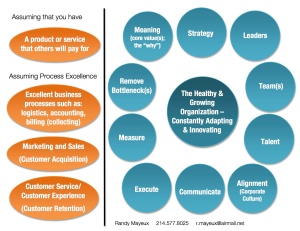When a person chooses what to read, it is indeed a personal decision. One person likes Jane Austen, another likes Jack Reacher.
Let’s call that kind of reading choice a “reading for pleasure” reading choice. (Surprise, surprise – my wife and I choose different authors to read).
But, there are also reading choices related to some element of business improvement: maybe books on personal productivity issues to enhance skills and abilities; maybe books to help make the team/company/organization more effective.
How do people make these selections?
I suspect that for many people they simply read what people are talking about at the moment. And that is not a bad thing. Because, any book that becomes a book that people talk about is probably worth a careful look. For example, on the current New York Times Business Books Best Sellers list, we find Outliers by Malcolm Gladwell and The Power of Habit by Charles Duhigg. These have been on the list pretty consistently for about 83 years now (slight exaggeration – Oultiers was first published in 2008 and The Power of Habit in 2012. Yes, I have presented synopses of each of these at the First Friday Book Synopsis in Dallas). Their continuing popularity speaks to their value. They are both very much worth reading.
There are other books that we choose to read because people tell us “you have to read this book.” Some of these are very much worth reading. Others may fit a category that my colleague Karl Krayer describes this way: he says of some of these books that people buy them, proudly display them on their shelves, but never actually read them. (Maybe they are too academic; too long; too complex. Some books may be poorly written – important content, but not good writing).
Here’s my suggestion on how to choose the next books to read. I suggest that you develop a “strategic reading plan.” You choose books to help you in specific areas of your work life. You may need to learn something new, or improve on certain skills. Maybe your organization is facing a problem, and the right book could help you tackle the problem.

Here is one way to develop such a strategic reading plan: I have written a short e-book, 12 Vital Signs of Organizational Health, that identifies key areas of organizational health. This graphic shows the areas. Take a look at each circle: a careful look. If you feel like you are quite competent in an area, then skip that area. But, if you feel like you need deeper understanding, that you have some “I need to get better at this” work to do in an area, than find the right book to help you make such improvement. (My e-book gives short descriptions of books for each area).
Or, of course, you can look for the best book dealing with that area on your own. We live in a very good time to do just that. I download many sample pages of books on my Kindle App as I search for the next good book to read.
Regardless of how you decide which books to read, I think a strategic reading plan can make you a more effective reader, and your reading will help make you more effective at the tasks and challenges that await you.
But, read! And, spend your reading time wisely. Why read a bad book when there are so many good books to choose from?
——————–

For nearly 18 full years, every month, Karl Krayer and I have each presented synopses of the best business books at the First Friday Book Synopsis. Our synopses, with handouts and audio recordings, are available at our companion site, 15minutebusinessbooks.com. If you are in the Dallas area on the first friday of the month, come join us. Our selections might help you develop your own reading plan.
